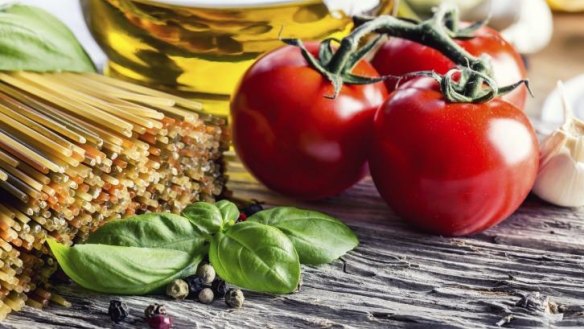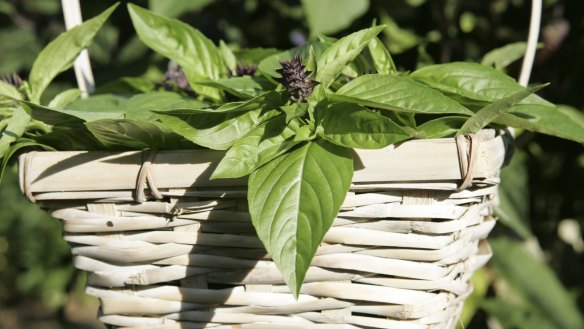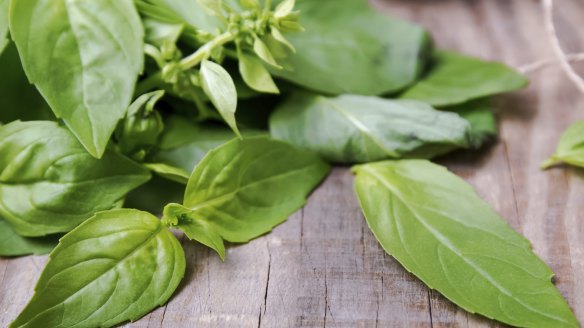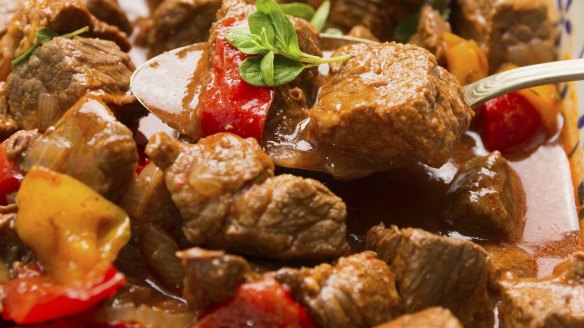Why you should plant basil with your tomatoes in Canberra

When you think tomatoes, do you also think basil? Basil is a wonderful addition to many kitchen menus and it has a fine heritage as well. Basil is used by people of many cultures in cooking. It has been part of the culinary scene across the Mediterranean lands for millennia, but it was not introduced to western Europe and the New World until the sixteenth century.
Basil certainly lives up its ancient Greek derivative basilikon, with its meaning of royalty. Often referred to as "the king of herbs", its soft, fragrant foliage enhances so many dishes but also supplies essential nutrients, minerals and vitamins to your diet.
Italian and Greek cuisines have adopted both sweet and purple basils. It is a testament to regions of Italy that several have named basils in their compendiums. The well known sweet basil is commonly called Genovese. This bush will grow to 75cm in height and produce wonderful clusters of shiny green leaves. Napolitano basil, on the other hand, produces very large leaves. They are also very tender, with intense scent and flavour.
There are several delightful basils with purple leaves. Dark opal basil with its attractive purple leaves will grow well in planter boxes. It is often used in salads and as a garnish. Red rubin basil has highly aromatic, deep purple leaves. Purple ruffles is another special variety whose large leaves have crinkly edges.
Lemon basil is fragrant with lemony-scented leaves. It can produce a harvest in just two months. It is good to use when baking fish.

Thai basil, with its purple stems and deep green leaves, is used fresh in many Thai and other Asian dishes. It is easy to grow and vigorous. It has a strong anise-clove flavour.
Sacred basil, a native from India, is revered by the Hindus and often is grown around shrines in that land. It has a stronger, clove-like aroma. Sacred basil is often added to curries and served in salads.
The online Italian Gardener, Green Harvest Seeds and Eden Seeds all offer a good selection of basil varieties. Seeds planted in September should begin to provide a harvest by the beginning of summer. Plant succession crops to keep your supply going through to the autumn months.

Basil needs warmth to grow well, so if you want to get an early start with growing your own basil, plant seeds in a propagation tray and keep inside or in a sheltered location that can be kept warm overnight. Planting out basil in the garden too early is like planting out those tomato seedlings shipped in from warmer climes: the cold and frosty nights will quickly kill them off.
In temperate areas, such as Canberra, basil needs to be planted in full sunlight. It is a wonderful companion for tomatoes, so you can set about growing both from seed now with the aim of having a wonderful summer and autumn harvest. You will have seedlings ready to transplant in early November.
Plant out the basil seedlings into well composted, rich soil. You can plant out in the garden alongside your tomato bushes, in the herb garden or in planter boxes on your balcony. As the plants grow, begin harvesting the leaves regularly. This will promote new leaf growth and provide you with a supply over many weeks.
There is now an F1 hybrid basil available called Nufar, which is resistant to fusarium wilt. This wilt is a devastating disease that basil producers have to contend with. Nufar has a large dark green leaf with a strong fragrance. It is high-yielding and you can continue to harvest leaves from it for an extended period.
If you are not using all of your basil immediately, wrap the remaining leaves in a slightly damp paper towel and keep in the cooler section of your refrigerator. Whenever you have a big surplus of basil, dry the leaves and store in a well sealed glass jar to use over the winter months.

Beef ragu with basil and oregano
1 kg gravy beef, cubed
30g butter
3 tbsp olive oil
½ tsp cayenne pepper
3 gloves garlic, finely chopped
½ tsp cayenne
2 brown onions
2 carrots
2 celery stalks
1 red capsicum
2 bay leaves
1 cup beef stock
2 tbsp tomato paste
600g diced tomatoes
10 basil leaves, torn
½ tsp oregano leaves, chopped
salt and black pepper
Cube the gravy beef and finely chop the onions, carrots and celery. Chop the capsicum. Heat the butter and olive oil in a heavy duty casserole pan and brown the beef. Add in the cayenne pepper, garlic and onion and cook for a further four minutes, stirring regularly. Add the carrots, celery, capsicum, bay leaves, beef stock, tomato paste and diced tomatoes. Simmer for 35 minutes then add the basil and oregano. Season with salt and pepper. Place the lid on the casserole and simmer for another 45 minutes until the beef is tender.
This week in the garden
* Plant out beetroot, carrots and radish into well drained, deep garden beds. Do not add in fresh manures or fertilisers, as you will end up with lots of vegetation and forked roots.
* Plant coriander, chervil and dill into your herb garden.
* Plant spinach, rocket, shelling peas and snow peas directly into your garden beds.
* Plant into seed-raising trays a selection of cos and salad bowl lettuces, tomatoes and capsicums, eggplant and celeriac. Keep the trays in a warm (inside) location overnight.
* Weed around garlic and onion beds and mulch with sugar cane mulch.
* Complete a spring clean of old broken timber stakes and flowerpots and other debris that would serve as shelters for slugs and snails.
* Seek out your favourite varieties of seed potatoes and lay them out in a semi-light, dry location to begin sprouting. Dig over your garden beds and plan to plant out potatoes in October.
Owen Pidgeon runs the Loriendale Organic Orchard near Hall.
Restaurant reviews, news and the hottest openings served to your inbox.
Sign up